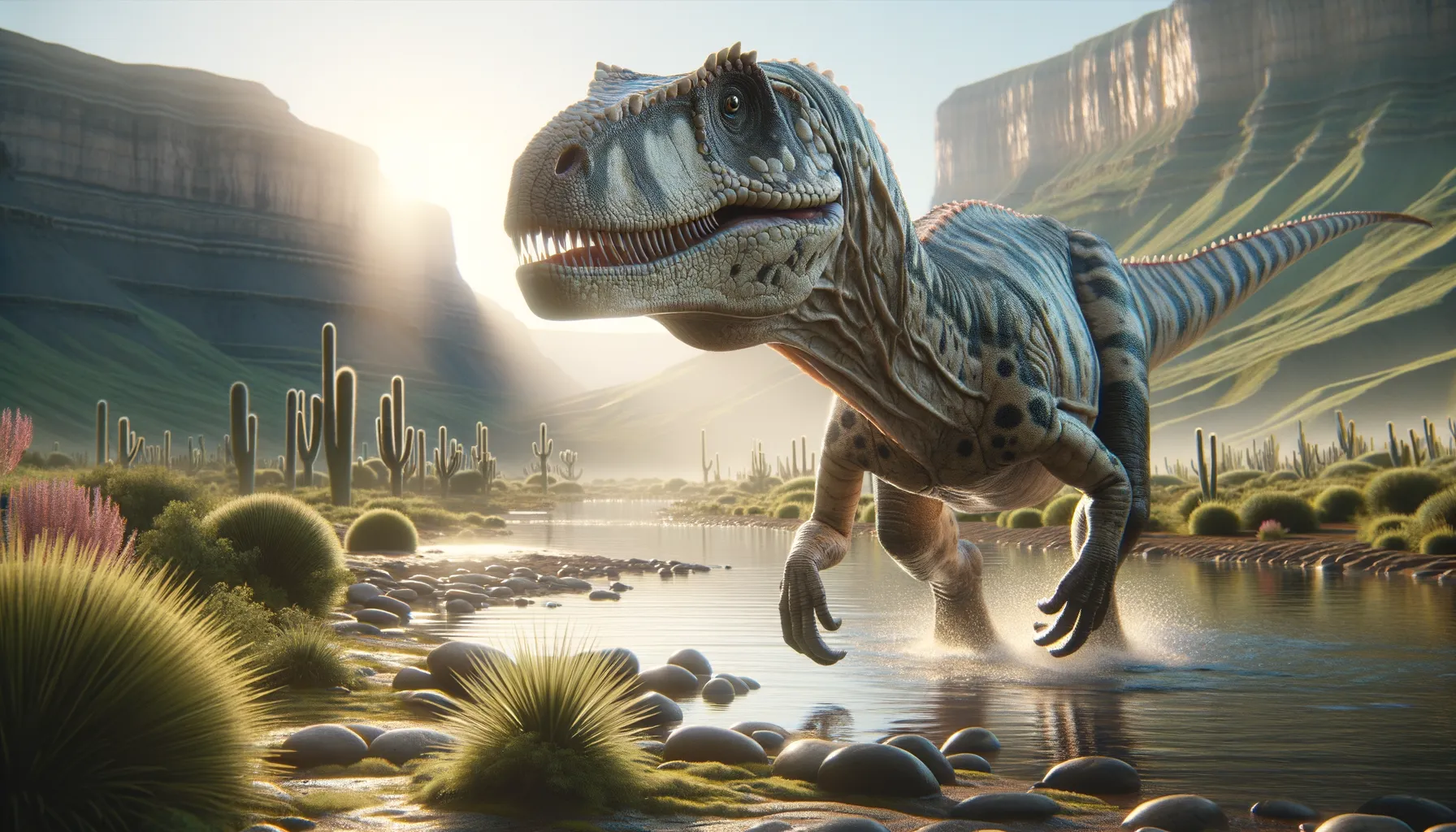
Revueltosaurus
More croc than dino!
Period
Triassic
Length
About 1 to 2 meters long.
Height
Approximately 0.5 meters tall.
Weight
Estimated to weigh around 20 kilograms.
Revueltosaurus, initially mistaken for a dinosaur, is actually a genus of crocodyliform, meaning it is more closely related to crocodiles than to true dinosaurs. Named after the Revuelto Creek in New Mexico where it was first discovered, this Triassic creature offers invaluable insights into early terrestrial reptile evolution. Its distinct teeth suggest a varied diet, differentiating it from more specialized species of the time.
Diet
Revueltosaurus had leaf-shaped teeth indicating an omnivorous diet. It likely fed on plants and possibly small animals or insects.
Hunting
As an omnivore, Revueltosaurus probably scavenged rather than actively hunted prey. Its diet was supplemented by whatever small creatures it could find with minimal pursuit.
Environmental challenges
During the Triassic period, Revueltosaurus faced a dynamic environment with changing climates and shifting land masses. It had to adapt to varied terrains and vegetation changes. Additionally, competition with other small reptiles and early dinosaurs posed further challenges.
Speed
Revueltosaurus was likely slow-moving.
Lifespan
Specific lifespan estimates are unknown.
First discovery
Discovered in New Mexico in 1989.
Fun Facts
- Revueltosaurus wasn't actually a dinosaur, but rather a distant cousin of crocodiles.
- This reptile lived during the Late Triassic period, around 210 million years ago.
- Revueltosaurus was initially thought to be a dinosaur based on its teeth, which were similar to those of herbivorous dinosaurs.
- Fossils of Revueltosaurus have been found in the southwestern United States, particularly in New Mexico and Arizona.
- The name 'Revueltosaurus' comes from the Revuelto Creek where its fossils were first discovered.
- Unlike most of its crocodile relatives, Revueltosaurus had a more plant-based diet.
- Its small size and distinctive teeth made it an interesting puzzle for paleontologists when first discovered.
Growth and Development
Revueltosaurus, like many reptiles, likely grew steadily throughout its life. Hatchlings would have been small and vulnerable, increasing their size and strength with age. The growth would be influenced by environmental factors and availability of food resources.
Habitat
Revueltosaurus inhabited semi-arid regions with seasonal rivers and floodplains. The environment supported a variety of flora, providing ample vegetation for this omnivorous creature. The habitat allowed for cohabitation with early dinosaurs and other Triassic reptiles.
Interaction with other species
Revueltosaurus likely coexisted with early dinosaurs and proto-mammals. It would have competed for resources with other small reptiles. Interaction might have included occasional skirmishes over territory or food sources.
Natural lifespan
Revueltosaurus' exact lifespan is still speculative.
Reproduction
Revueltosaurus likely reproduced by laying eggs, similar to modern reptiles. Egg clutches were probably buried in soft ground for protection. The young would hatch ready to fend for themselves, growing rapidly to avoid predation.
Social behaviour
While not much is known, Revueltosaurus was likely solitary or lived in small groups. Their social interactions might have been limited to mating seasons or regions with abundant food. Territorial behavior could promote solitary activities except during necessary congregations.
Fossil locations
The key discoveries of Revueltosaurus fossils have occurred primarily in New Mexico, USA. Fossil evidence was initially described from fragmented teeth and later from more complete remains. These findings assist paleontologists in reshaping the understanding of Triassic reptilian life.
